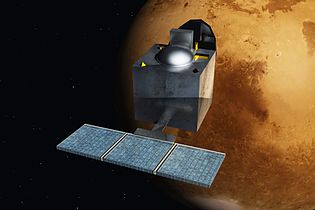The Indian MOM spacecraft that is on its way to Mars to orbit is only the first swallow in the journey that will utilize the infrastructures that India has prepared and that have been used by it in the lunar missions. In the future, the intention is to use them again for more complex flights to Mars and other planets

Haim Mazar
In preparation for launching spacecraft to the moon, India has established an infrastructure for the service of this destination. The experience gained in the United States and Russia made it easier for it to build these infrastructures. She did not enter a field of action that she had no knowledge and experience about. This experience is worth a lot of money saved from the Indian Space Agency. This was actually the case in China and Japan when they decided to launch spacecraft to the moon. In November 2006, the director of the Indian Space Agency stated that India will use these infrastructures in preparation for launching spacecraft to Mars, Venus and other destinations in the solar system, such as landing a spacecraft on an asteroid and launching a spacecraft that will fly by a comet.
The first goal is to launch a spacecraft that will enter orbit around Mars. In April 2012 it was reported that this year preliminary discussions had begun towards the realization of this plan. The intention was to carry out this launch in 2016 or 2018. The increase in the budget of the Indian Space Agency made it possible to advance the launch date to 2013. The spacecraft was launched on November 5, 2013 and is scheduled to reach Mars on September 24, 2014. The name of the spacecraft is MOM Mission (Orbiter Mars) and the Indian name was Manglyaan. The spacecraft is tracked and monitored using the United States' DSN (Deep Space Network) tracking station. In July 2014 it was reported that India is planning another spacecraft to be launched to Mars between 2017 and 2020. The final decision will be made after the MOM spacecraft enters orbit around Mars.
The weight of the spaceship is 1,350 kg and the weight of the scientific equipment is 26 kg and it includes a camera for medium resolution color photography, an infrared spectrometer to check the chemical composition of the soil and devices that will make it possible to measure the atmosphere including a methane detector. Beyond the various scientific measurements, technological measurements are made which by their nature check the engineering aspects of the spacecraft. The spacecraft was launched using the PSLD (Satellite Launch Vehicle Polar) launcher.
The spacecraft was not launched directly to Mars. It enters a parking orbit around the earth whose distance from the ground is 248-23,000 km. For a month it circled the Earth and during this time six orbit changes were made and in each of them the epigeia was raised, so that in the last epigeia the spacecraft's engines were activated, freeing it from the Earth's gravity and it set off on its way. When the spacecraft reaches Mars, it will enter an orbit whose distance from the ground is 500-80,000 km.

2 תגובות
The moons of Jupiter are very interesting and may contain life
You have to make an effort to get there
Every country invests in the same things. If everyone had gotten together, there would have been humans on Mars, on Europa's moon a long time ago...